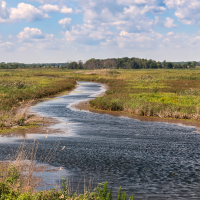Webinar: Ontario Legacy Gas Wells – The Need to Find Them Before We Can Fix Them

Presenters:
- Stewart Hamilton, Senior Geochemist
- Terence Trefiak, Senior Vice President, Air Quality Services
- Gary Winthrop, Oil & Gas Sector Lead (Canada)
Overview:
Legacy petroleum wells in Ontario present unique challenges related to geology, historical land tenure and the 19th Century development of arguably the oldest petroleum industry of the modern era, beginning in 1858. Their impact includes recent high-profile incidents of environmental damage, serious injury and death.
Ontario’s unique geological circumstances include the presence of upward regional hydraulic gradients near the Lake Erie shoreline that may originate from the Allegheny Plateau on the U.S. side of the lake. This, coupled with sulphate-rich aquifers and buoyant upward gas transport results in biogenic production of toxic hydrogen sulphide, which is now widespread.
An even more serious problem is that the locations of many wells are unknown. In the first hundred years of hydrocarbon extraction in Ontario, record keeping was poor and there are likely thousands of wells that were never recorded or for which records have been lost. Wells are often found by accident, usually with negative consequences to the landowner or finder.
A host of new technologies employed by Matrix Solutions / Montrose Environmental Group can detect methane remotely, then scale-down to find the actual source on the ground. Methods employed include drones, lasers, methane-detecting infrared cameras, truck-mounted mobile gas analyzers and hand-held devices, which can be combined to optimize detection of leaks at all scales. Matrix-Montrose is currently working on numerous legacy petroleum-related projects in Ontario, drawing on our experience on tens of thousands of well abandonments in Western Canada.

